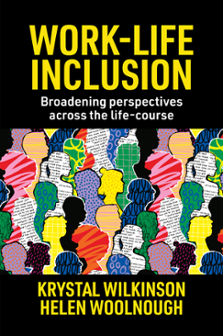
Index
Work-Life Inclusion: Broadening Perspectives Across the Life-Course
ISBN: 978-1-80382-220-4, eISBN: 978-1-80382-219-8
Publication date: 5 February 2024
Citation
(2024), "Index", Wilkinson, K. and Woolnough, H. (Ed.) Work-Life Inclusion: Broadening Perspectives Across the Life-Course, Emerald Publishing Limited, Leeds, pp. 189-194. https://doi.org/10.1108/978-1-80382-219-820241017
Publisher
:Emerald Publishing Limited
Copyright © 2024 Krystal Wilkinson and Helen Woolnough
INDEX
(see also Chronic illness)
- Prelims
- Chapter 1: Introduction: Exploring the Under-Explored
- Chapter 2: Work-Life Balance and Social Class
- Chapter 3: Parallel Lives: Exploring the Experiences of Students who Work
- Chapter 4: Empowering Generation Z: Achieving a Healthy Work-Life Interface
- Chapter 5: Questing the Work-Life Challenges Faced by Solo-Living Women Academics: Can There be a “Life” for Us?
- Chapter 6: Navigating Fertility Treatment Alongside Work and Employment: The Work-Fertility Interface
- Chapter 7: The Intersect of Miscarriage and Work: Concealment, Minimization and Discriminatory Practice
- Chapter 8: Perinatal Mental Health and Employment: Exploring the Work-Illness Intersection in the Context of UK Policing
- Chapter 9: Are Training Opportunities Another Work-Life Challenge? The Experiences of Combining Apprenticeship Training with Working Split Shifts in Hospitality Roles
- Chapter 10: Managing Work and Life with an Unseen Chronic Illness
- Chapter 11: Muted Voices of Invisible Men: The Impact of Male Childlessness
- Chapter 12: Menopause and Workplace Well-being
- Chapter 13: Ageing and Work-Life Complexities in Retirement
- Chapter 14: Ageing Migrants' Work-Life Interface Across “Transnational” Life Courses
- Chapter 15: Conclusion
- Index